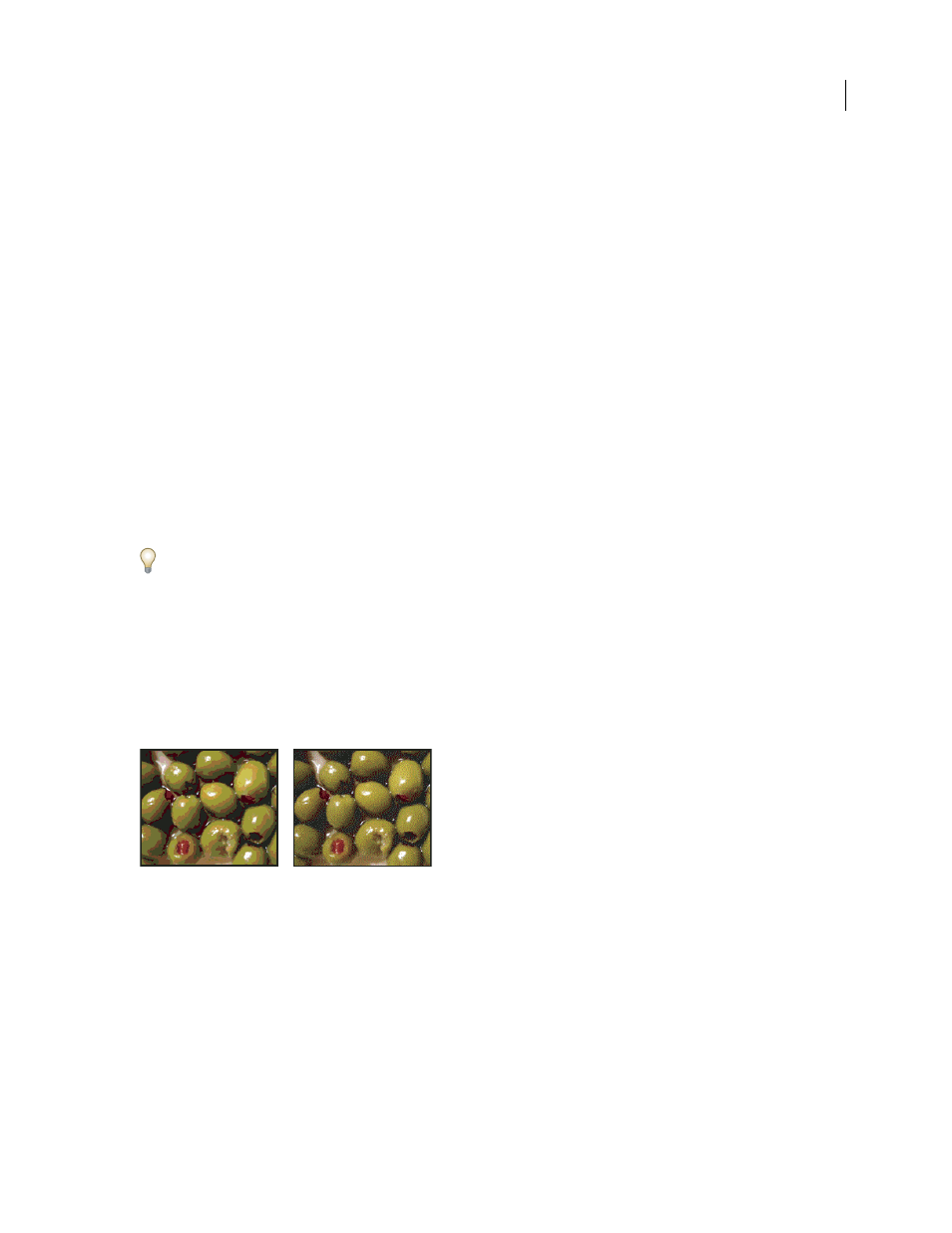Adobe Illustrator CS3 User Manual
Page 394

ILLUSTRATOR CS3
User Guide
388
Note: You cannot use the Lossy option with the Interlaced option or with Noise or Pattern Dither algorithms.
Color Reduction Method and Colors
Specifies a method for generating the color lookup table and the number of
colors you want in the color lookup table. You can select one of the following color reduction methods:
•
Perceptual
Creates a custom color table by giving priority to colors for which the human eye has greater sensi-
tivity.
•
Selective
Creates a color table similar to the Perceptual color table, but favoring broad areas of color and the
preservation of web colors. This color table usually produces images with the greatest color integrity. Selective is the
default option.
•
Adaptive
Creates a custom color table by sampling colors from the predominant spectrum in the image. For
example, an image with only the colors green and blue produces a color table made primarily of greens and blues.
Most images concentrate colors in particular areas of the spectrum.
•
(Restrictive) Web
Uses the standard 216-color color table common to the Windows and Mac OS 8-bit (256-color)
palettes. This option ensures that no browser dither is applied to colors when the image is displayed using 8-bit color.
(This palette is also called the web-safe palette.) Using the web palette can create larger files, and is recommended
only when avoiding browser dither is a high priority.
•
Custom
Uses a color palette that is created or modified by the user. If you open an existing GIF or PNG-8 file, it
will have a custom color palette.
Use the Color Table palette in the Save For Web & Devices dialog box to customize the color lookup table.
•
Black and White, Grayscale, Mac
OS, Windows
Use a set palette of colors.
Dithering Method and Dither
Determines the method and amount of application dithering. Dithering refers to the
method of simulating colors not available in the color display system of your computer. A higher dithering
percentage creates the appearance of more colors and more detail in an image, but can also increase the file size. For
optimal compression, use the lowest percentage of dither that provides the color detail you require. Images with
primarily solid colors may work well with no dither. Images with continuous-tone color (especially color gradients)
may require dithering to prevent color banding.
GIF image with 0% dither (left), and with 100% dither (right)
You can select one of the following dithering methods:
•
Diffusion
Applies a random pattern that is usually less noticeable than Pattern dither. The dither effects are
diffused across adjacent pixels.
•
Pattern
Applies a halftone-like square pattern to simulate any colors not in the color table.
•
Noise
Applies a random pattern similar to the Diffusion dither method, but without diffusing the pattern across
adjacent pixels. No seams appear with the Noise dither method.